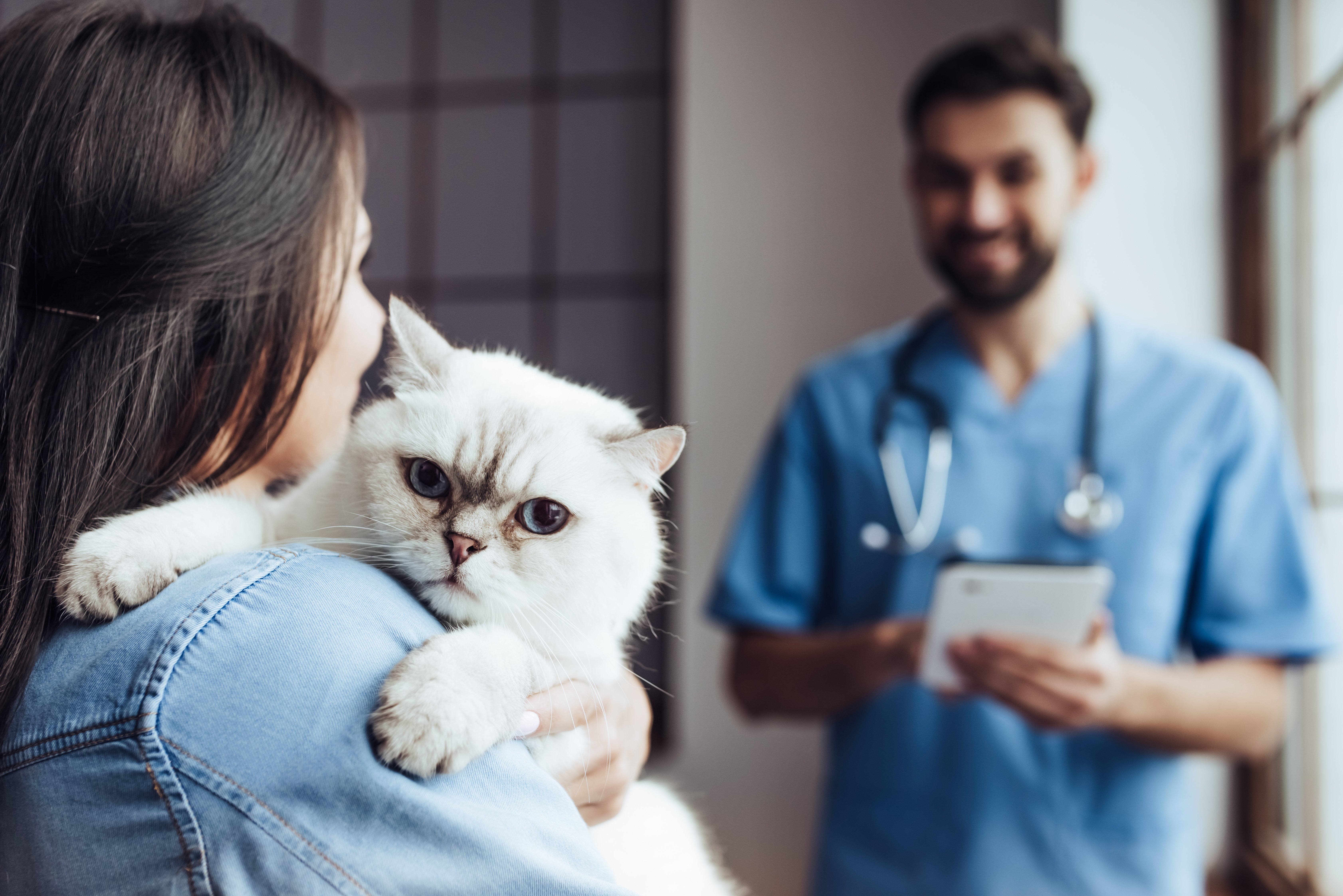
Have you ever dreaded going to the doctor or had a bad experience during a doctor visit? Do you ever feel anxious in the waiting room before your appointment, wondering what’s going to happen and not feeling comfortable around a room full of strangers? Well, imagine how our pets can feel when they go to see their doctor!
A veterinary visit can cause for our pets lots of stress, fear, and anxiety. Being poked and prodded, sitting in a waiting room with other fearful dogs and cats,, suffering from a nail trim gone wrong…it’s no wonder that a trip to the vet’s office likely doesn’t rank high on our pets’ list of favorite things to do. Veterinary visits can also be stressful for pet parents, especially when pets are very sick or there is concern about the costs of diagnosis and treatment.
Fortunately, veterinary visits don’t have to be stressful or anxiety-ridden. The question is, how can these visits be a more pleasant experience?
Fear Free
In 2016, Dr. Marty Becker, affectionately known as “America’s Veterinarian,” founded Fear Free to educate veterinary professionals, pet professionals (trainers, groomers), and pet parents on how to reduce stress, fear, and anxiety in our pets. Fear Free advocates for focusing on a pet’s emotional wellbeing, rather than just their physical health. As stated on the Fear Free website, the goal of the organization is to “take the pet out of petrified and put the treat into treatment.”
Veterinary professionals, who are veterinarians and veterinary nurses, can become Fear Free Certified®. To date, over 43,000 veterinary professionals have registered for the certification program, and almost 32,000 have become certified. This certification aims to help pet parents see these professionals as true experts of pet health and wellbeing.
Troublingly, veterinary visits have decreased in recent years, in part because of how much fear, anxiety, and stress these visits can induce in our pets. Rather than talk to their veterinarian, pet parents may opt to skip the veterinary office altogether and seek out information on pet health and pet care from other sources, particularly the internet. Knowing that a veterinarian is Fear Free Certified® can encourage pet parents to restore their trust in veterinarians and feel comfortable taking their pets in for veterinary visits.
Veterinarians who want to become Fear Free Certified® sign up for an 8-module course that provides education in several areas, including reducing or eliminating fear “triggers” for pets at the veterinary office. Below is the list of modules a veterinarian will complete before becoming certified:
- Module 1: Fear Free behavior modification basics
- Module 2: Fear Free transport of cats and dogs to and from the veterinary hospital
- Module 3: Fear Free reception and waiting area
- Module 4: The Fear Free exam room
- Module 5: Fear Free in-hospital care
- Module 6: Fear Free procedures
- Module 7a: Pre-visit protocols: complementary therapeutics, products, and pharmaceuticals
- Module 7b: In-hospital protocols for sedation, anesthesia, and analgesia
Once a veterinarian passes each module’s exam, they will receive a Fear Free Certificate. A Fear Free Certified® veterinarian must then complete annual continuing education to maintain their Fear Free membership.
Veterinary practices can also become Fear Free Certified®. This certification indicates not only a team effort to care for pets’ emotional wellbeing, but also a dedication to incorporate the Fear Free philosophy into all facets of veterinary practice.
To locate either a Fear Free Certified® practice or veterinarian near you, visit the Fear Free directory on their website.
A Fear Free Veterinary Visit
So, how can a Fear Free Certified® veterinarian reduce a pet’s stress, anxiety, and fear? Here are a few Fear Free strategies:
- Encourage pet parents to use aromatherapy or pheromones during the car ride to the veterinary office.
- Place plants or shelves in the waiting room to create barriers between pets.
- Designate species-specific examination rooms.
- Examine the pet in the position that is most comfortable for them, which may not be on the examination table.
- Use a low and calming voice during the exam.
Bringing it Together
A veterinary visit does not have to be a tense test of wills between a pet, pet parent, and veterinarian. By focusing on a pet’s emotional wellbeing, Fear Free Certified® veterinarians can create a veterinary visit that’s free of fear, stress, and anxiety for you and your pet.
Content provided by JoAnna Pendergrass, DVM. Dr. Pendergrass is owner and founder of JPen Communications, a medical communications company specializing in consumer education.
If you love your pets like family, you want to protect them like family. By enrolling in pet insurance, you can save up to 90% on vet bills which means saying “yes” to life-saving treatments, no matter the cost. If you’re not a part of our pack, start by getting a free quote.







